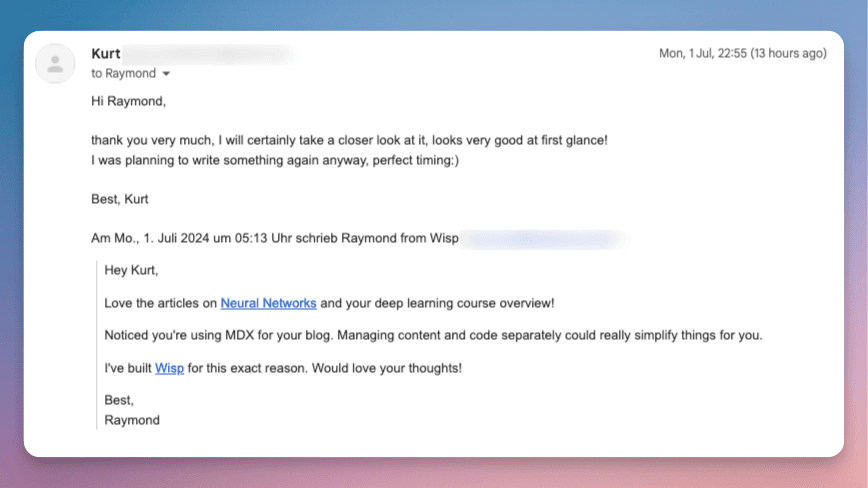 You've spent hours meticulously preparing your sales pitch, researched your prospect's company, and finally mustered the courage to make that call. But when you dial the number, you're met with immediate rejection or, worse, complete silence as they hang up. Your carefully crafted script falls apart, and you find yourself stumbling over words while your confidence crumbles.
You've spent hours meticulously preparing your sales pitch, researched your prospect's company, and finally mustered the courage to make that call. But when you dial the number, you're met with immediate rejection or, worse, complete silence as they hang up. Your carefully crafted script falls apart, and you find yourself stumbling over words while your confidence crumbles.
Cold calling in 2025 remains one of the most challenging yet potentially rewarding sales activities. Despite countless articles declaring its death, the reality is that 82% of buyers are still open to meetings with sales reps via cold calls, according to recent studies. Yet many salespeople and founders struggle to convert these calls into meaningful conversations, let alone actual business.
The Cold Calling Reality Check
Cold calling is tough. Even skilled sales professionals typically achieve only a 2% success rate overall. For SMB tech founders trying to validate their GenAI solutions or SaaS products, this can feel particularly demoralizing.
As one frustrated founder shared on Reddit: "I spent around 8 months building stuff for nobody in particular. I have basically nothing to show for it." Another lamented: "Nobody wants to talk to me so I can't even get started."
The problem isn't that cold calling doesn't work—it's that most people are doing it wrong. They're calling at the wrong times, using ineffective scripts, and failing to understand what truly motivates their prospects to engage.
Timing Is Everything: When to Make Your Move
Your timing can make or break your cold calling success. Research and real-world experience from sales professionals point to clear patterns:
Best Days:
Tuesday through Thursday are optimal
Avoid Mondays (when people are handling weekend backlogs) and Fridays (when people are mentally checked out for the weekend)
As one sales professional noted on Reddit: "I only cold call Tuesday-Thur. Don't bother on Monday or Friday IMO."
Best Times:
10:00 AM to 11:00 AM (after morning meetings but before lunch)
1:00 PM to 2:00 PM (right after lunch when people are relaxed)
4:00 PM to 5:00 PM (when people are wrapping up their day)
The post-lunch window proves particularly effective, as one salesperson discovered: "For me I found a lot of success by calling people exactly after 1:00 PM, they just finished lunch and they are super relaxed."

The Psychology of Effective Opening Lines
The first 30 seconds of your call determine whether you'll get a chance to continue or face immediate rejection. Many callers make the critical mistake of launching into a sales pitch too quickly.
Instead, follow these proven approaches:
Lead with value, not sales: Begin by offering something genuinely helpful—insight, information, or a relevant observation about their business.
Name-drop strategically: Mention mutual connections or reference specific content they've published to establish credibility.
Ask permission: Simple phrases like "Do you have a moment?" or "Is this a good time to talk?" show respect for their schedule.
Be transparent about your purpose: Don't try to disguise the fact that it's a sales call. As one sales professional shared: "Just be upfront and honest about the reason you are calling."
Most importantly, sound like a human being. The number one complaint about cold callers is that they sound robotic or overly scripted. As one experienced caller noted: "Tonality and positive vibe is crucial—you definitely can't sound robotic."
A simple yet effective tip: Smile while you call. Your voice naturally conveys more warmth and confidence when you're smiling, even though the prospect can't see you.
Preparing for Objections: Your Mental Armor
Cold calling can be draining, especially when faced with rejection after rejection. One salesperson described it as "making 100 dials a day and often getting shut down."
The key to maintaining confidence is preparation. Here's how to handle the most common objections:
1. "I'm not interested"
Instead of giving up, pivot to curiosity: "I understand. May I ask what solutions you're currently using to address [specific problem]?"
2. "Send me some information"
This is often a polite dismissal. Counter with: "I'd be happy to. To make sure I send the most relevant information, could you tell me specifically what aspect you'd like to know more about?"
3. "We're happy with our current provider"
Acknowledge and probe: "That's great to hear. What aspects of their service do you find most valuable? I'm curious if there are any areas where you wish they could improve?"
4. "Call me back later"
Be specific about scheduling: "I understand you're busy. Would Tuesday at 10 AM work better, or would you prefer Thursday afternoon?"
5. "We don't have the budget"
Shift to value: "I understand budget constraints. Many of our clients initially felt the same way but found that our solution actually helped reduce costs in [specific area]. Would it be worth exploring how that might work for you?"
One sales professional recommends: "Write down the top five brush offs and objections you get, plan out how you'd like to respond going forward, and practice it over and over again until you have it memorized."

The Multi-Channel Approach: Beyond Just Calling
In 2025, effective cold outreach rarely relies on calls alone. The most successful approaches use a carefully orchestrated combination of:
Pre-call engagement: Connect on LinkedIn and engage with their content before calling
Email sequences: Send valuable, educational content related to their pain points
Social media interaction: Comment thoughtfully on their posts to build familiarity
Video messages: Send personalized video introductions for high-value prospects
Direct mail: For key accounts, physical mail can cut through digital noise
This multi-channel approach addresses one of the biggest challenges expressed by founders: "None of them were interested in talking to me." By establishing multiple touchpoints before the actual call, you create familiarity and context that makes prospects more receptive.
As one experienced salesperson advises: "I never, ever ask someone to book a call with me right away, that's a rookie mistake." Instead, they recommend: "Let's start asynchronously—email or chat is best."
The AI Enhancement: How GenAI Is Transforming Cold Calling
In 2025, artificial intelligence has become an indispensable ally for cold callers. Here's how successful sales teams are leveraging GenAI:
Prospect research automation: AI tools can analyze a prospect's digital footprint across FAANG platforms and professional networks, providing detailed insights about their pain points and priorities in minutes.
Call recording analysis: Advanced AI systems can analyze your calls to identify patterns in successful conversations versus failed ones, helping you refine your approach.
Real-time coaching: Some teams now use AI assistants that provide prompts during calls, suggesting responses to objections or questions based on what's working best across the organization.
Follow-up optimization: AI workflows can determine the optimal timing and channel for follow-ups based on prospect engagement data and conversion rates.
Personalization at scale: Generate highly personalized outreach that references specific details relevant to each prospect without spending hours on research.
The key is using AI as an enhancement to human connection, not a replacement. As one sales leader put it: "The technology helps us be more human by handling the mundane tasks so we can focus on building relationships."
Customer Validation and User Research Through Cold Calling
For startup founders, cold calling isn't just about sales—it's a critical tool for customer validation and finding product-market fit (PMF). When used effectively, cold calls can provide timely feedback that guides product development.
One founder who successfully used cold calling for user research shared: "I stopped pitching altogether and just asked questions. The insights we gathered completely changed our product roadmap and probably saved us months of building the wrong features."
When using cold calls for research:
Be explicit that you're seeking feedback, not making a sale
Prepare specific questions about their pain points
Listen more than you talk
Offer something valuable in return for their time
Follow up with a summary of insights and thank them
This approach transforms rejection from a negative experience into a valuable data point, making every call worthwhile regardless of the sales outcome.
The Cold Calling Metrics That Actually Matter
Many sales teams focus on vanity metrics like call volume when they should be tracking indicators of quality engagement:
Conversation rate: The percentage of dials that result in meaningful conversations (aim for 10-15%)
Meeting conversion rate: How many conversations convert to scheduled meetings
CTR on follow-up materials: Are prospects engaging with the landing pages and content you send?
POCs initiated: For B2B tech sales, how many proof-of-concept trials result from calls?
Average call duration: Longer calls typically indicate higher engagement
By focusing on these quality metrics rather than sheer volume, you can refine your approach based on what's actually working.
Conclusion: The Human Element Remains Irreplaceable
Despite technological advances and changing business landscapes, the fundamental truth of cold calling remains unchanged: it's about human connection. As one sales veteran shared: "Selling something is simply about having a conversation that is more parts listening than talking."
The most successful cold callers in 2025 are those who:
Do their homework before picking up the phone
Focus on providing value before asking for anything
Use technology to enhance rather than replace the human element
Practice active listening rather than script recitation
Remain persistent without becoming pushy
Adapt their approach based on real feedback
When done right, cold calling remains one of the most direct and effective ways to reach decision-makers, particularly in the SMB space. By combining time-tested principles with modern tools and a genuine desire to solve problems for prospects, you can transform the dreaded cold call into a powerful engine for business growth.
Remember: behind every rejection is a lesson, and behind every successful call is a person who felt heard and understood. Master that human connection, and you'll master cold calling in 2025 and beyond.


